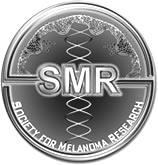Skin Cancer Biopsy and Removal
When any form of skin cancer is found our doctors will sample (biopsy) the affected tissue and send it to a pathologist for analysis.
Skin Cancer Pathology Test
A Histopathologist examine the sample by looking through a microscope.
In order to diagnose whether or not the sample is a skin cancer, the pathologist studies the suspicious cells under a microscope and may perform other tests on the skin sample.
This procedure is called a histopathological analysis. It is the only sure way to diagnose skin cancer.
While the sample is excised here at the Bondi Junction Skin Cancer Clinic tour Pathologists are at another location in Sydney.
We advise every patient of their Biopsy Results when they are returned form the pathology lab. This can take up to a week
If SKIN Cancer Is Found
If the biopsy shows you have cancer, tests might be done to find out if cancer cells have spread within the skin or to other parts of the body. Often the cancer cells spread to nearby tissues and then to the lymph nodes.
Has the Cancer Spread?
Lymph nodes are an important part of the body's immune system. Lymph nodes are masses of lymphatic tissue surrounded by connective tissue. Lymph nodes play a role in immune defense by filtering lymphatic fluid and storing white blood cells.
Often in the case of melanomas, a surgeon performs a lymph node test by injecting either a radioactive substance or a blue dye (or both) near the skin tumor. Next, the surgeon uses a scanner to find the lymph nodes containing the radioactive substance or stained with the dye. The surgeon might then remove the nodes to check for the presence of cancer cells.
If the doctor suspects that the tumor may have spread, the doctor might also use computed axial tomography (CAT scan or CT scan), or magnetic resonance imaging (MRI) to try to locate tumors in other parts of the body.











